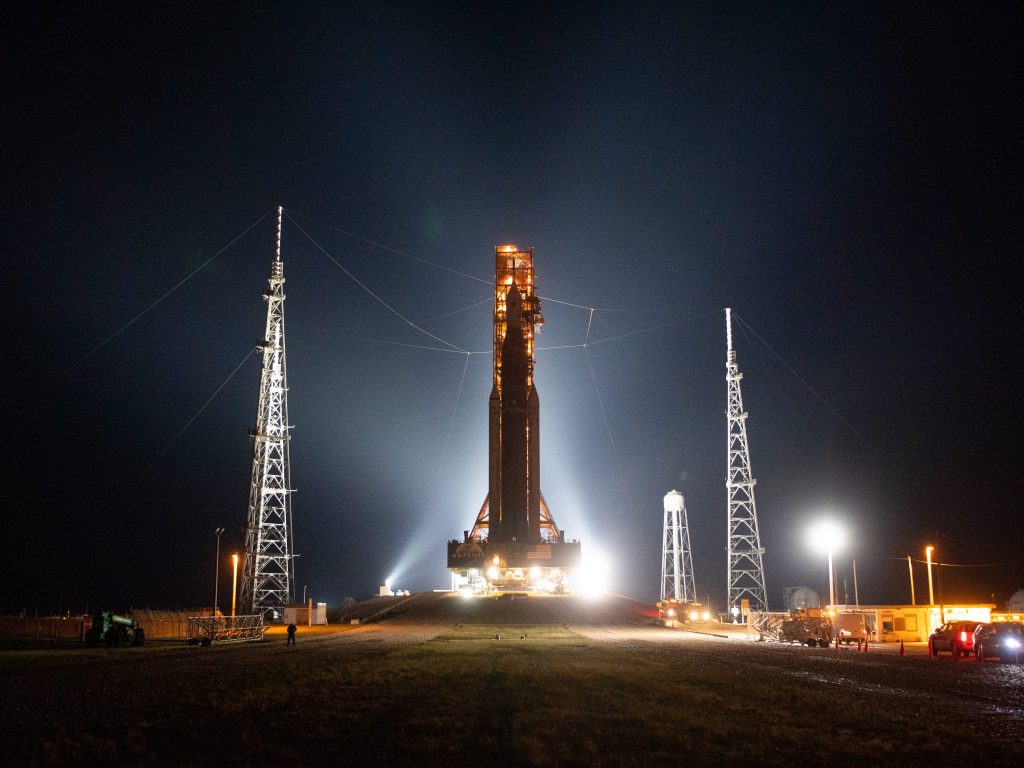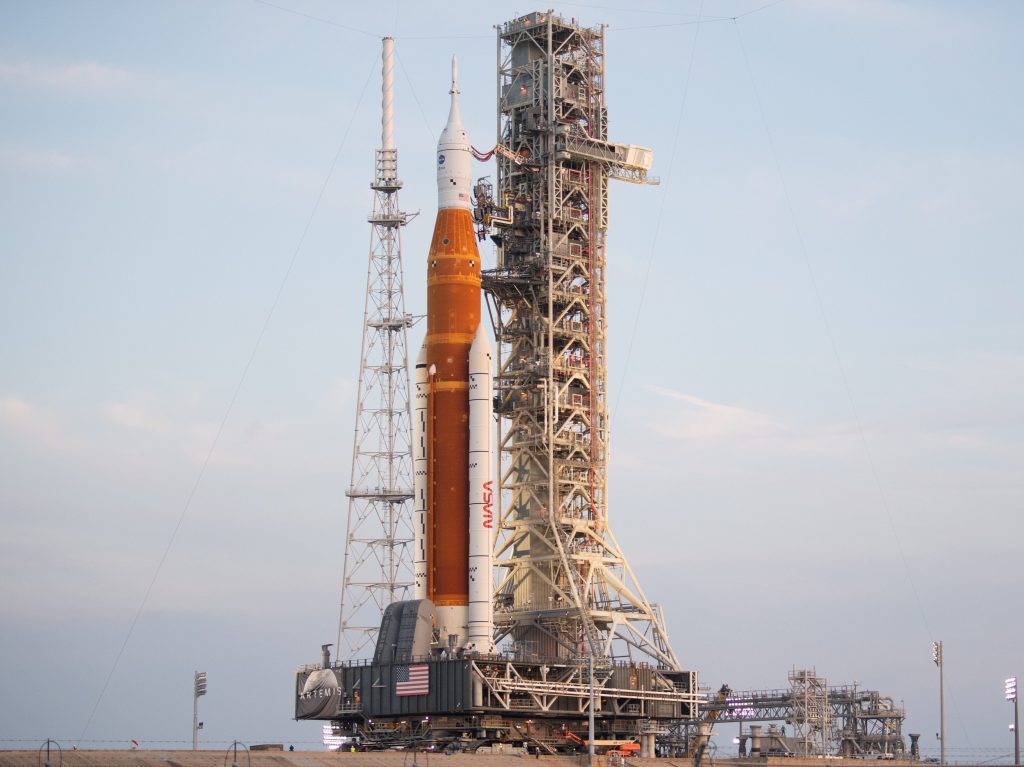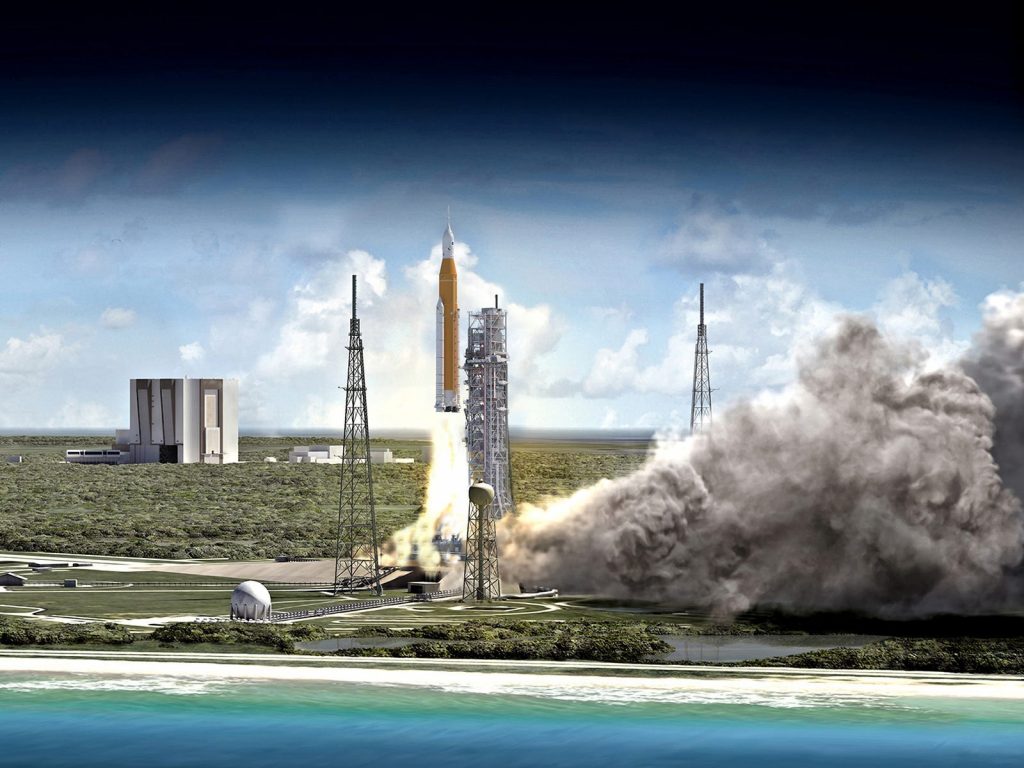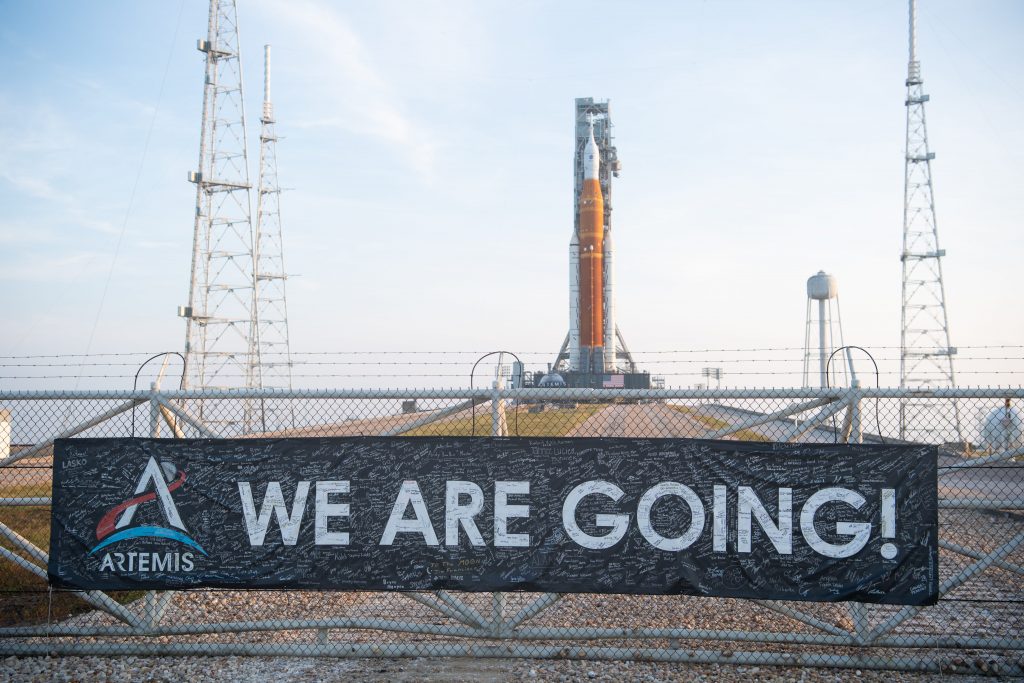- NASA rolled its new Space Launch System (SLS) mega-rocket to its Florida launchpad on Tuesday.
- The first SLS launch is set for August 29, to rocket an Orion spaceship on a flight around the moon.
- Artemis I is the first mission of NASA's program to land astronauts on the moon since 1972.
NASA's powerful new Space Launch System moon rocket rolled to the launchpad on Tuesday, poised to fly its first mission to the moon.
Standing taller than the Statue of Liberty and crowned with an Orion spaceship, the 23-story rocket was hoisted atop a crawler and rolled 4 miles through the dark to Launch Pad 39B.
The crawler made its journey at a glacial pace of roughly 1 to 2 miles an hour, and the trek took over 10 hours, starting at about 10 p.m. ET after technicians waited for a lightning storm to pass.

NASA built the SLS to reinstate its presence on the moon. The rocket is the cornerstone of the agency's new Artemis program, which aims to set up permanent bases in the moon's orbit and on its surface, paving the way to eventually send astronauts to Mars.
To jumpstart the program, NASA has set an ambitious goal to land astronauts on the moon in 2025, putting boots on the lunar surface for the first time since 1972.
The rocket is due to roar to life and scream through the Florida skies as soon as August 29, pushing an uncrewed Orion spacecraft toward the moon for the first time.
If everything goes according to plan, the spaceship should fly a wide loop around the moon and back, plummeting to an ocean landing on October 10.

Artemis I is a test. Before putting astronauts on board, NASA has to prove that SLS and Orion can do the job.
Four car-sized engines and two rocket boosters should give the rocket enough thrust to push Orion all the way around the moon — traveling further into deep space than any spacecraft made for human passengers has ever traveled.
While this Orion capsule will have nobody on board, Artemis I will test the rocket and spacecraft's capabilities for carrying astronauts on the more-than-250,000-mile journey to the moon.
"This is now the Artemis generation," Bill Nelson, NASA's administrator, said at a press briefing on August 3. "We were in the Apollo generation, but this is a new generation, this is a new type of astronaut. And to all of us that gaze up at the moon, dreaming of the day humankind returns to the lunar surface, folks, we're here. We are going back and that journey, our journey, begins with Artemis I."

If the spaceship successfully completes its mission, the next flight, called Artemis II, will send four astronauts on the same lunar roundabout. Then Artemis III would carry astronauts to lunar orbit and dock to a SpaceX Starship, which would land them on the moon's surface.
That's just the beginning of NASA's planned Artemis program. Eventually, NASA plans to launch astronauts from the moon to Mars.
